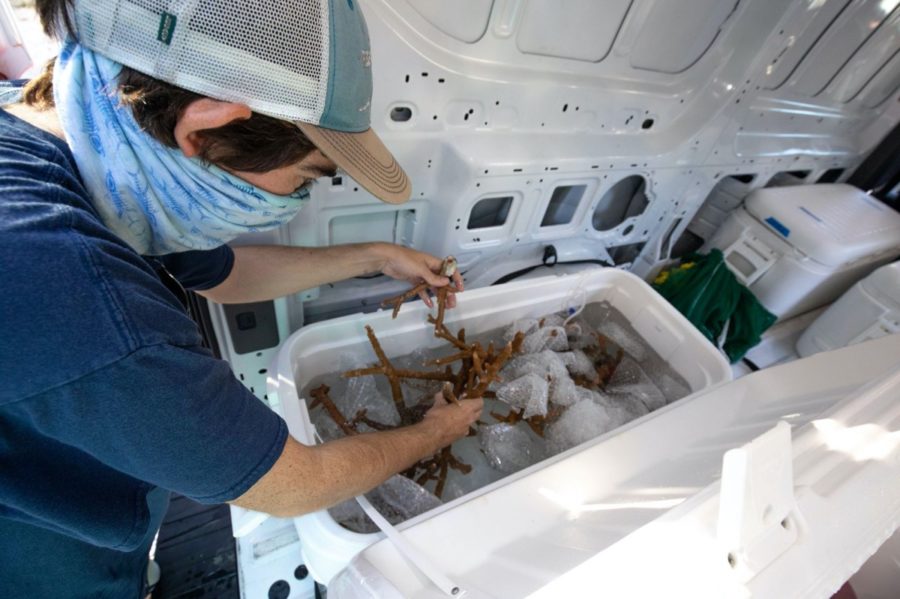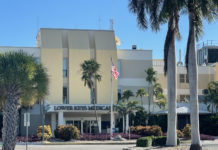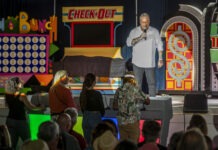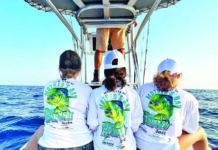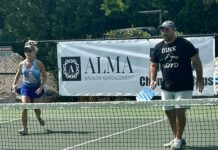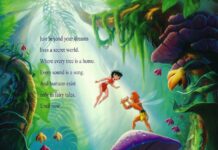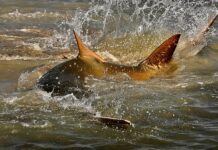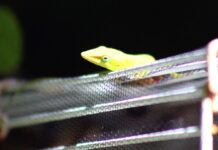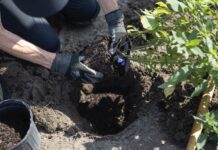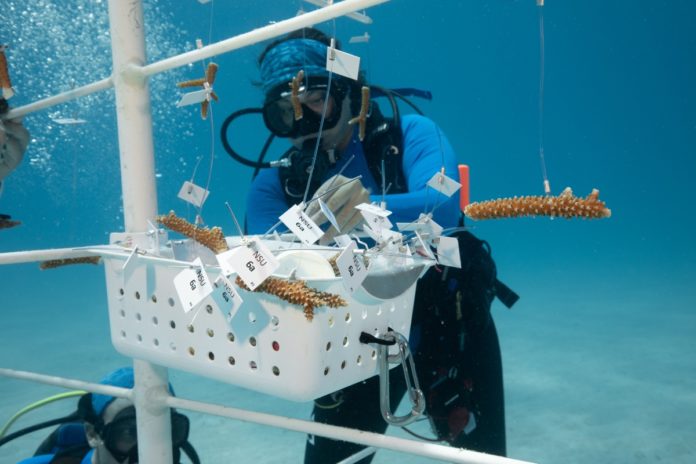
More than 90 genotypes of critically endangered staghorn coral were recently exchanged at Coral Restoration Foundation headquarters among scientists from Mote Marine Lab, Nova Southeastern University, University of Miami, and Florida Fish and Wildlife Conservation Commission (FWC).
During the swap, CRF gave 27 different staghorn genotypes to each of the four collaborating organizations. In return, and among the other four partners, 66 new genotypes of staghorn were introduced to the CRF Tavernier Coral Tree Nursery — the largest in the world.
This is the first time that a coordinated coral swap of this kind has occurred, with the same genotypes being exchanged at the same time, to be housed in multiple locations. Supported by a grant from NOAA’s Restoration Center, the exchange provides security for the future of this species, and expands opportunities for research into coral genetics, disease and climate change resilience, and reproduction.
Diego Lirman, associate professor at the University of Miami, said the genotype exchange is clear evidence of the commitment by NOAA and Florida restoration partners to protect and restore Florida’s Coral Reef.
“This unprecedented genotype exchange will create vital genetic repositories, enhance the genetic diversity of restoration efforts, and provide unique research opportunities to aid the recovery of our threatened coral reef ecosystem,” he said.
Many of the genotypes involved in the swap are now extinct in the wild. The fact that these are the only living representatives of some of these genotypes highlights the importance of an exchange of this kind to promote redundancy across restoration systems.
Alison Moulding, a coral biologist with NOAA Fisheries says, “Having redundancy of corals with the same genetic identity in multiple nurseries is important for preserving genetic diversity. By bringing pieces of the same colony into nurseries located throughout the Florida Reef Tract, we can better insure against loss from sporadic events like storms.”
Since 2017, CRF has been returning at least 50 genotypes of staghorn and 50 genotypes of elkhorn to every reef site it is working to restore. The CRF Science Department tracks the survivorship of these different genotypes on the reef and collects data which informs its methods.
All of the genotypes that were exchanged came from wild colonies, with a couple originating from colonies native to the Dry Tortugas. A small subset of these corals has special significance for Coral Restoration Foundation.
These have been nicknamed by some of the CRF team as “Lazarus” corals; they are genotypes that used to be housed in the CRF nursery, but were lost during stress events, like Hurricane Irma. Thankfully, before the storm, CRF shared some of these colonies with Mote Marine Laboratory. Through this swap, they are returning to the organization’s ocean-based nursery.
Jessica Levy, restoration program manager at Coral Restoration Foundation, said the return of these coral genotypes underscores the importance of these kinds of exchanges. By working together, they can ensure that important, diverse genetic material is protected, with multiple colonies held in multiple places to safeguard against any potential disasters.
“We are incredibly pleased to be collaborating with these partners,” Levy said. “We are all working towards the same goal of saving and restoring our coral reefs, and by working together, we have more chance of succeeding.”
